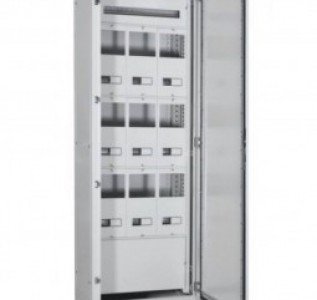
The content of electrical panels varies according to the type of project and the dimensions of the project. The elements in electrical panels include equipment such as active and reactive power meters, contactors, capacitors, busbars, relays, fuses, breakers, and control and command buttons.
There are different types of electrical panels depending on the production material, intended use, and type of use.
Electrical Panels by Production Material
Sheet metal panels are panels produced from iron steel in sheet form. Panels made of insulating materials are produced with polyester-type insulating materials. Internal and external types are available. One of the most important details in physical properties in panel selections is the IP protection class. The panel must be selected in the protection class suitable for the environment where the panel will be located.
The differences between sheet metal panels and polyester panels are related to outdoor conditions. Polyester panels do not require painting and maintenance. These panels are not affected by environmental factors such as moisture, dust, and impact. Polyester panels are preferred in environments with adverse weather conditions and the possibility of mechanical impact.
Electrical Panels According to Construction Type
External type panels are panels that can be used outdoors. They are more resistant to outdoor weather conditions than other types of panels. Their protection classes designated as IP are also extremely high. Wall-type panels are panels that accommodate multiple electrical needs together. It can meet all needs such as meters, distribution, and compensation panels as a block.
Standing-type panels can be mounted with screws and gaskets without the need for welding. These panels, which are suitable for every environment, are thin and long-looking in the form of cabinets. Standing-type panels are preferred in automation systems and energy and lighting.
Panels According to Purpose of Use
Distribution panels are the panels that distribute the electricity supply within the building. It includes neutral connections, earth leakage, and intermediate cable elements necessary to ensure that the electric current can be transmitted to the building or commercial residence.
Lighting panels can be preferred in large buildings. Installing the lighting as a stand-alone panel provides an advantage for large systems. Lighting panels are also necessary for the grouping system.
Construction site panels are used to meet the electricity needs of buildings and facilities under construction. These panels contain elements such as KAKR, meters, sockets, and fuses. The panels used for the operation and operation of the electrical system are control panels. These panels include switches, measuring instruments, meters, and elements that protect the equipment.